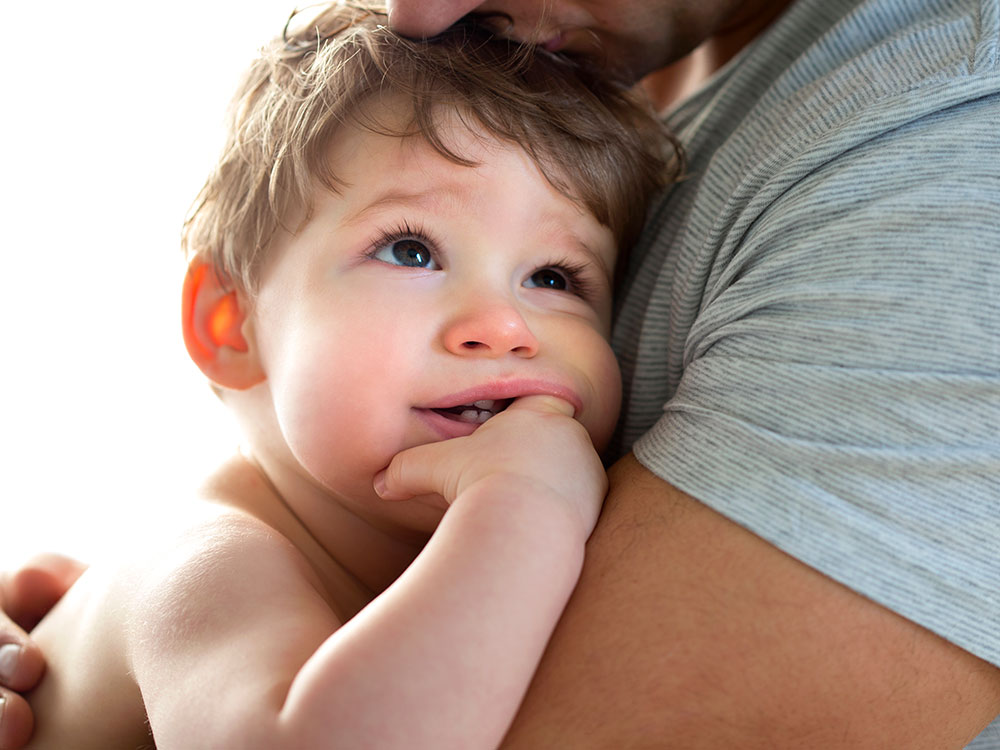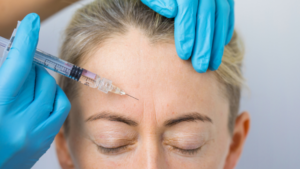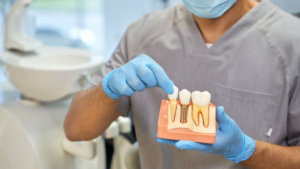Keeping your child’s teeth healthy isn’t easy.
This is shown by the scary fact that 12% of 3 year olds have visible tooth decay.
To fight this epidemic, I will explain exactly how to keep your child’s teeth healthy from the ages of 6 months – 3 years old.
This will include: how to clean your child’s early teeth, how to instil good eating habits (hint: you may need to force it on them at first), and how to best use your dentist at this time.
I’ll also talk a bit about managing teething as I know that it can be a nightmare for a lot of parents.
Let’s get started:
How to avoid decay in early milk teeth.
Your child’s first tooth will most likely erupt between 4 to 8 months of age.
The first teeth that erupt are almost always the lower front teeth (lower incisors).
In most cases both lower front teeth will appear within days of each other.
Once your child’s first teeth come through in the front, more teeth should swiftly follow.
Milk teeth tend to erupt in a certain pattern as follows:
| Your child’s age | Teeth that come out |
|---|---|
| 5-7 months | Lower Central Incisors |
| 7-9 months | Upper Central Incisors |
| 10-12 months | Lower Lateral Incisors |
| 10-12 months | Upper Lateral Incisors |
| 13-16 months | First Molars |
| 14-18 months | Canines (Upper and Lower) |
| 2-3 years | Second Molars |
Once any of your child’s teeth appear, their health needs to be nurtured in order to avoid decay.
This is achieved through:
- Brushing your child’s teeth twice daily as soon as they appear.
- Getting your child to enjoy food and drinks that are low in sugar.
- Taking your child to the dentist every 6 months.
How to brush my child’s early teeth.
Your child’s teeth will come out before they are able to brush.
It is therefore up to you, the parent, to brush your child’s early teeth.
To brush your child’s early teeth properly, you simply need to follow three steps:
- Brush each teeth individually, brushing each surface of the tooth for 5-7 seconds (roughly 10 – 20 seconds per tooth).
- Brush all the way down to the gum line, to the point where the bottom bristles of the brush runs over the gum itself.
- Make sure the bristles go in between the gaps that separate your infant’s teeth.
You can brush the gums lightly as well as bacteria can collect under the gum line.
As the enamel of young teeth is thinner than that of an adult’s teeth, it is also important to brush your child’s teeth gently.
You can ensure gentle brushing through using a soft bristled toothbrush and by holding the brush with a light grip.
Speciality infant brushes, which are smaller than regular brushes, and have softer bristles than standard brushes, are definitely worth getting.

What toothpaste should my infant be using?
I would recommend using fluoridated toothpaste even at this early age, as regular use of fluoride can strengthen enamel.
Considering that a young child’s enamel is relatively soft, the strengthening effects of fluoride will improve their teeth’s resilience to cavities, wear and sensitivity.
That being said, you should use low fluoride toothpaste especially designed for young children.
This is because too much exposure to fluoride toothpaste in the early years of one’s life can lead to a cosmetic condition called fluorosis.
Fluorosis can cause tooth staining which can be hard to remove even by a dentist. In more severe cases it can cause brown staining and can even misshape tooth enamel.

Chronic fluoride poisoning can affect the whole body. However this is very unlikely to happen just from swallowing toothpaste when brushing.
Cases of childhood fluoride poisoning from ingesting too much toothpaste cite diarrhoea and nausea as the only symptoms suffered by the children involved.
Using low fluoride toothpaste, and in small amounts, eliminates some of the risk of this happening.

For a child under the age of 3, I would recommend using a toothpaste with a fluoride concentration of 1,000ppm (parts per million).
However I would also strongly encourage that you insist on having your child spit their toothpaste at the end of brushing. If they struggle to do this, you can have them tilt their head forward to allow gravity to assist.
If your child regularly swallows their toothpaste, this indicates that they probably enjoy the taste of it.
This is a bit of a double edged-sword: one one hand if your child enjoys the taste of their toothpaste they will be less resistant to brushing. However you do not want your child to swallow their toothpaste either.
Aside from the ingestion of toothpaste, sucking and chewing on the brush also makes it harder to clean their teeth properly so you need to try and discourage this.
I would suggest stopping the brushing as soon as you feel them chewing or sucking, and telling them that you will not continue until they stop (obviously do not just stop the brushing entirely).
Hopefully your child will realise that its just quicker and easier to just let you brush rather than fighting against you.
When to start flossing my child’s teeth.
The best time to start flossing your child’s teeth is not really dependent on their age.
Rather, you should start flossing children’s teeth as soon as they have two adjacent teeth that are in good contact with each other (the sides of the teeth are touching all the way up the tooth).
At what point this happens varies from child to child, but usually with milk teeth it will only be the molars that would require flossing (not always though).

Flossing young children’s teeth is difficult, there is no way around it.
However it really should be done, gingivitis (infection of the gums) is very common in older children, and starting flossing as early as is necessary can really lower your child’s chances of developing it.
The biggest challenge when flossing a young child’s teeth is getting them to open their mouth for long enough to take the floss.
Unlike brushing, where the brush keeps your child’s mouth open, you have to ensure that your child keeps their mouth open without obstructing it with something.
To get around this problem, I recommend using a floss pick to floss your child’s teeth.

Avoiding the spread of bacteria harmful to teeth.
This is perhaps less obvious than brushing, but a key factor to looking after early teeth is to minimise the opportunities for bacterial infection of the mouth.
Tooth decay is caused by acids created by harmful bacteria— this bacteria can be passed from parent to child through saliva.
This most commonly happens when you share food or cutlery with your child, but can even occur when you kiss them on the lips.
Young children have thinner enamel and a weaker immune system than adults, putting them at particularly high risk of tooth decay.
So you should be really careful about saliva transfer between you and your child, particularly if you suffer from some form of tooth decay yourself.
What foods to feed an infant in order to protect their teeth.
As new teeth come out, they need to be put to use.
Generally, you will want to start giving your child solid food between 6-12 months.
The food that you give to your child at this age can hugely impact the health and development of their teeth.
Remember the scary statistic that 12% of 3 year olds have visible tooth decay?
Well the main culprit of this is children consuming too much sugar.
We all know that eating sugar is bad for your teeth.
But these negative effects are effects are even more profound for young children.
This goes back to children having softer enamel than adults. This makes teeth more vulnerable to plaque acid damage.
Consumption of sugar causes plaque bacteria to produce acid, it therefore needs to be very carefully monitored in young children.
Ideally your child should have no more than 20 grams of sugar a day between the ages of 6 months and 3 years old.
This includes sugars from food and drinks.
20 grams of sugar can accumulate very quickly, particularly when you consider that 100ml of milk contains 5 grams of sugar.
The enjoyment of food is something that is acquired. Therefore, offering low sugar foods to your child to explore will set you on the right path.
If you give your child to taste and swallow a specific food item on 10 separate occasions, it is likely that they will start to enjoy (or at least tolerate) it.
I’ll also give you some less obvious foods that you should avoid giving young children:
- Crisps and processed foods – usually contain more sugar than you expect (particularly the nicer flavours) and stick to the teeth, bathing them in sugar. The sharp edges can also damage the softer tissues in you child’s mouth.
- White bread – this sticks to the teeth and saliva alone can break the complex carbohydrates down into sugar.
- Most fruits – they tend to range from 15% to 40% sugar. Try not to feed your child more than one portion of fruit each day. Vitamins should mainly come from vegetables. One of the better fruits to give to your child is berries, as they are low in sugar compared to other fruit (strawberries have on average only 5% sugar). That being said berries are very acidic so should still be given in low quantities.
- Sweet “orange” vegetables – such as butternut and sweet potato. These are often the easiest vegetables to get little ones to get used to – it’s a great source of vitamins and carbs but make sure its not the only vegetable that your child has.
What your child drinks is also vastly important.
As milk contains sugar, you should start to introduce water as the main drink of your child’s diet.
A good ratio at around 18 months is having your child drink the same amount of water as they do milk.
Try to increase the ratio of water to milk as your child gets older.
As your child drinks less milk (and more water) you may want to supplement the loss of calcium in their diet by introducing other dairy products such as yoghurt and cheese.
Fruit juice and other sweet drinks need to be introduced with caution as they are too easily drunk to excess and can contain up to 50% sugar.
Diluting juice with water, and only allowing it as an occasional treat can teach your child to drink juice in moderation without drastically increasing their sugar intake.
Baby bottle tooth decay (“Bottle Mouth”) and how to avoid it.
For the 12% of children under 3 who have tooth decay, I’m willing to bet that a large number of them have been allowed to develop the habit of regularly having a bottle in their mouth.
The phenomenon of “baby bottle tooth decay” or “bottle mouth” is damage caused to a young child’s teeth caused by constantly having their teeth bathed in sugar due to being able to drink juice or milk from a bottle whenever they want.

Allowing children to carry a bottle filled with milk or juice with them at all times (including when they in bed at night) is the main contributing factor to this.
This is, hands down, the worst thing that you can do for your child’s developing teeth.
Having your child constantly have a bottle filled with juice is like having them constantly having a lollypop in their mouths.
Please don’t do it.
The most important steps to avoiding baby bottle tooth decay are:
1) Transitioning your child from a bottle to a cup as quickly as possible.
Babies become very attached to their bottles as it provides them with sensory stimulation as well as nourishment.
You therefore need to break this attachment in order to avoid the trap of your child endlessly having a bottle in their mouths.
The transition from a bottle to a cup should happen when your child moves on from a pure milk diet to one which contains solid food.
As solid food replaces milk, the need for a bottle diminishes so your child should gradually stop using one altogether.
Using spill proof sippy cups, and allowing your child to give up using the bottle gradually will make your life infinitely easier.
As sippy cups have hard teats, and require more effort to drink from compared to bottles, so your child is less likely to become attached to them.
That being said, you still want to move to having your child using a regular cup as soon as they are physically able to. This is because a hard-teated cup can interfere with the growth of your child’s jaw if used too much.
2) Having your child drink only milk and water.
Bottle related tooth decay on occurs when the bottle in question is filled with a sugar drink (usually juice, milk or squash).
If you’re struggling to break your child’s attachment to their bottle, you can greatly reduce the risk of them developing tooth decay by having them drink more water (and less of any sugary drink) from the bottle.
Before the age of 2 you still probably want your child to have some milk in their diet (be it through formula or breast milk before 12 months, or cow’s milk after 12 months) but try and slowly have them drink more water, especially in the evening.
3) Have your child use their bottle only at regular times.
This applies regardless of whether your child is using a bottle or a sippy-cup.
Having your child only having access to their bottle at certain times will help break down any attachment that they might have towards it.
Of course you should give your child their bottle if they are thirsty, but take it away as soon as they have had their drink.
In particular, you want to not allow their child to have their bottle at night. Most of the damage caused to teeth by the bottle occurs when a child has the bottle in their mouth overnight.
This gives the bacteria in their mouth hours upon hours to turn the sugar from your child’s bottle into tooth-eroding acids.
When to first take your child to the dentist.
As soon as your child’s first tooth erupts, it is time to take them to the dentist.
This is so your dentist can identify and treat any early issues that may affect your child’s teeth.
A dentist will also advise you on how to specifically look after your child’s teeth.
This kind of tailored oral hygiene, recommended by a professional, will always be superior to generic care, regardless of your diligence.
During the first few years of your child’s life, you should try to take them for a dental check up every six months.
This frequency is required to monitor oral health through the rapid development of your child’s teeth.
Such regular trips to the dentist will also help instil this ritual as a habit, leading to responsible self-care of teeth in the future.
How to manage teething.
The erupting of new teeth inevitably comes with teething pain.
Teething is pain and swelling that occurs in the gums soon before teeth erupt.
As teething happens just before teeth erupt, a young child can experience teething pain in different areas of their mouth from four months to three years of age.
It all depends on which teeth are coming through at that particular time.
Different children react in different ways, and with different intensity to teething pain, but its most common symptoms are irritability, excessive drooling, sleeplessness (due to pain) and an aversion to feeding.
The best way to manage teething pain really depends on which teeth are coming out.
For front teeth coming through (usually occurring from 6-12 months) the pressure caused by rubbing the affected area with clean, damp gauze can provide relief to your child.
For more acute teething pain, you can try putting the damp cloth or gauze in the freezer for a few minutes before you apply it to your child’s gums.
As your child gets older, they are likely to experience teething in the back of their mouths as their molars erupt.
This is often more painful, as the teeth that are coming out are bigger and come out more slowly.
More importantly for you, applying pressure to this part of an older child’s gums can result in being bitten…
At this age teething toys may be more appropriate so children can manage their own teething pain by applying the soothing pressure themselves.
They can apply the pressure with their fingers (make sure they are clean), cold hard food or frozen teething toy.
In terms of painkillers, this is best used when applying cold pressure is not enough, or when you are unable to do so (such as at night).
The only painkiller I would recommend for teething is ibuprofen.
This is because a lot of the discomfort caused by teething is due to the inflammation of the surrounding area. This is why nausea and a fever can also accompany teething.
As Ibuprofen is an anti-inflammatory, it can fight all aspects of teething discomfort, and is therefore more effective for teething than other painkillers.

It is easiest to give your infant ibuprofen in the form of sugar free syrup.
However, it is vitally important that you use only ibuprofen products that are designed for young children, and that you do not exceed the recommended dose.
In most cases, this will mean not giving your child a dose of ibuprofen more than once every eight hours.
Giving your child ibuprofen before bed is recommended to help ease irritability and restlessness at night.
You should note that even in small doses suitable for an infant, ibuprofen can cause stomach pain.
The best way to mitigate the chances of this happening is to give them food with the ibuprofen.
Paracetamol (in the form of Calpol— remember that lovely taste) can be given to supplement ibuprofen in severe cases of teething pain. However, it should not be used as the main painkiller to soothe teething pain.
To summarise.
Now I’ve taken you through how to best look after your child’s oral health from 0-3 years old.
At this point they will have gone from having no teeth to all 20 of their milk teeth, hopefully free from cavities and any gum inflammation.
Let’s go over again how we make this happen:
1. As soon as teeth erupt you need to brush them for roughly 20 seconds each using gentle brushing on every surface of the tooth.
2. Floss your child’s teeth as early as possible, use a floss pick to make this easier.
3. Take your child to the dentist as soon as their first teeth appear, then take them for check ups every 6 months.
4. Don’t let your child get in the habit of eating high sugar food. Offer primarily low sugar food. Avoid processed foods.
5. Give water as your child’s main drink after 12 months.
6. Do not let your child carry around a bottle habitually and have them switch to drinking from a regular cup as early as possible.




